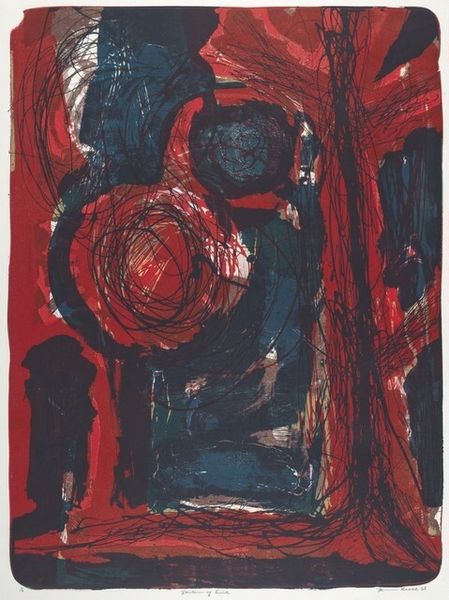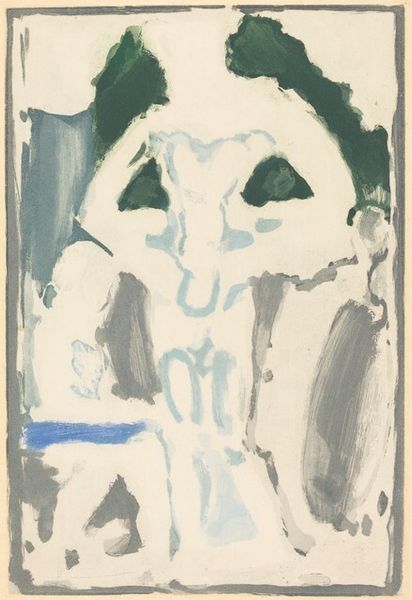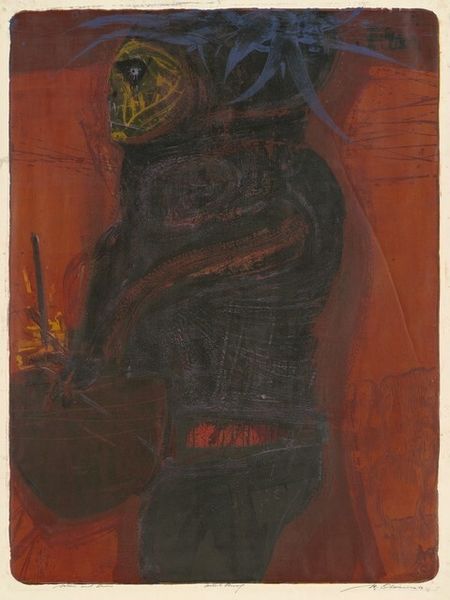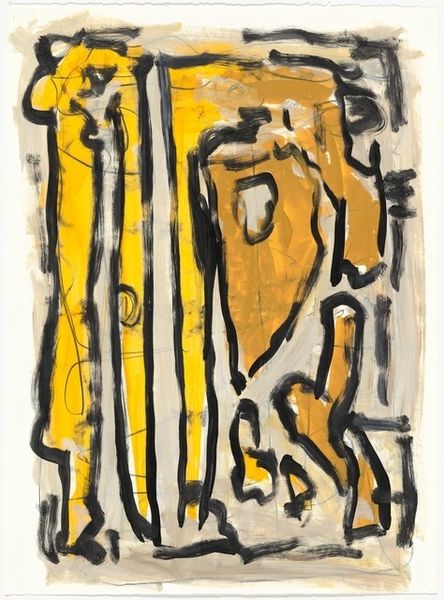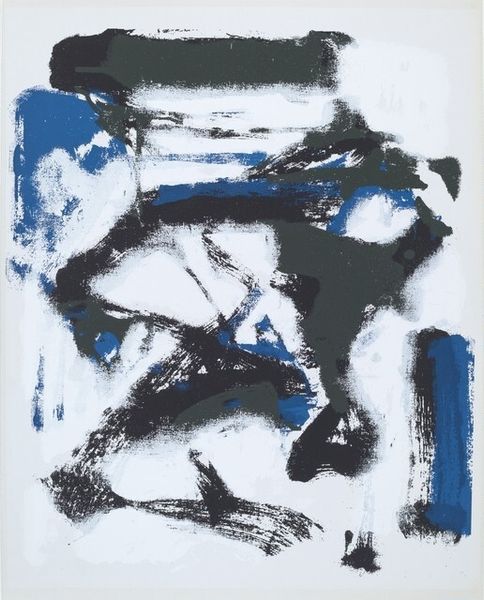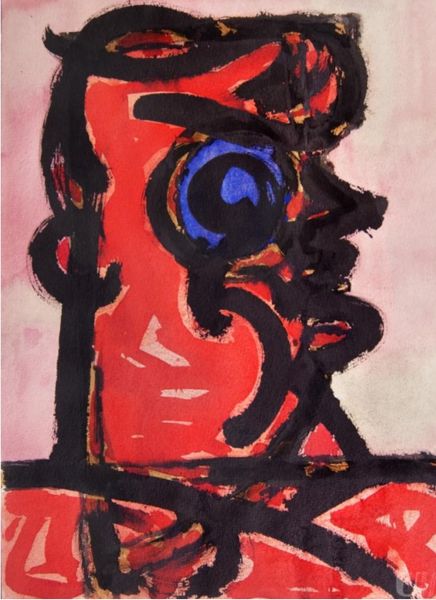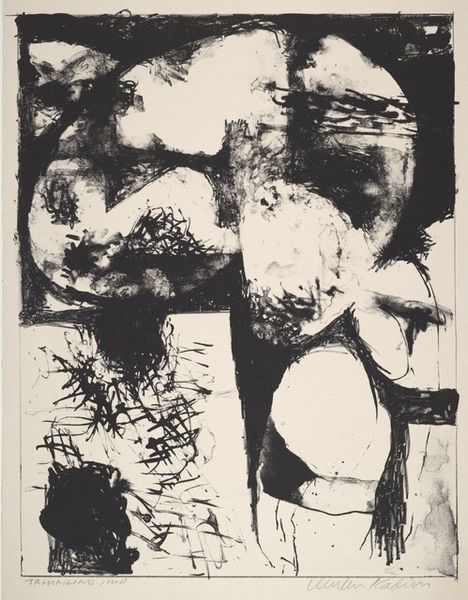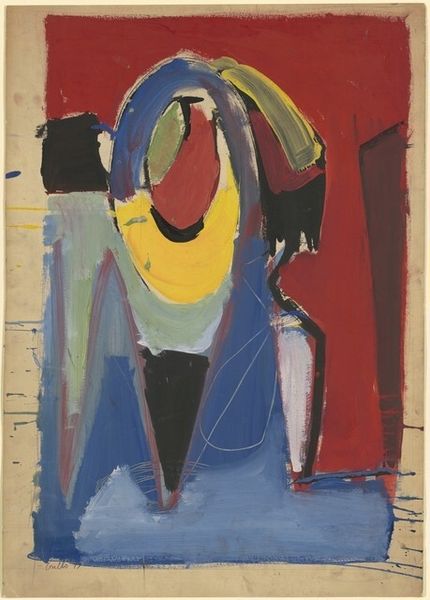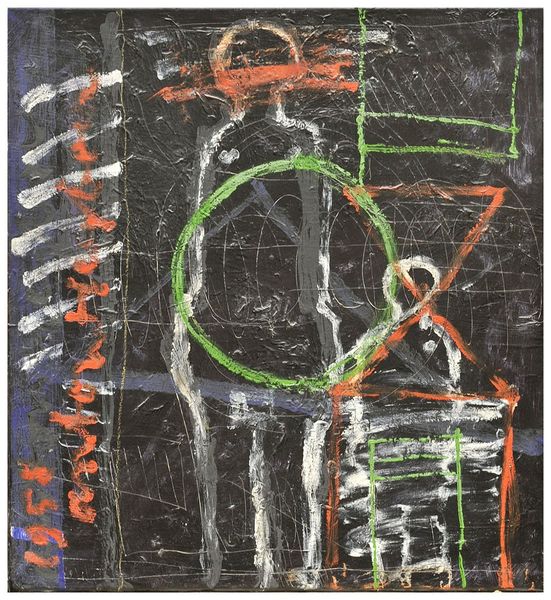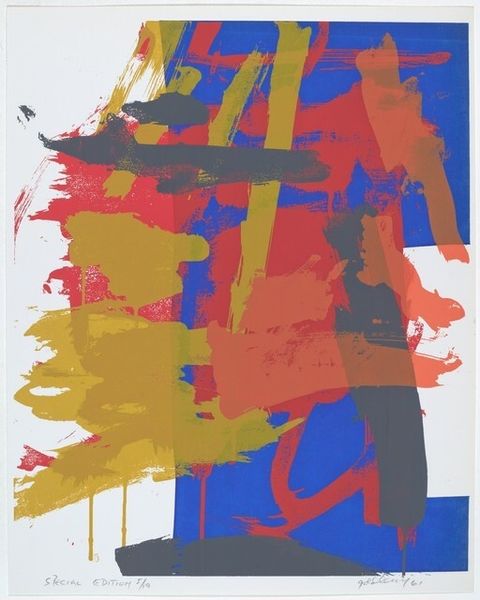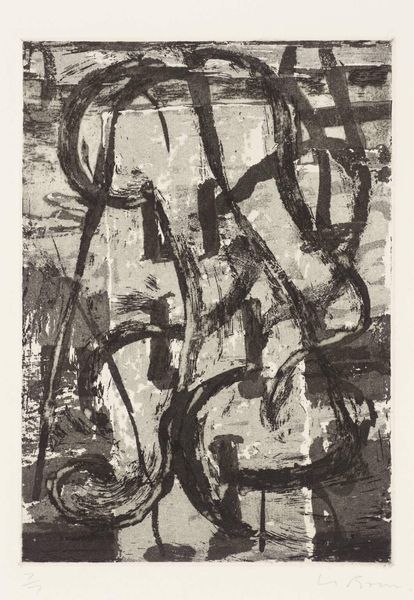
graphic-art, print
#
abstract-expressionism
#
graphic-art
#
abstract expressionism
# print
#
form
#
geometric-abstraction
#
line
Dimensions: overall: 49 x 32.6 cm (19 5/16 x 12 13/16 in.)
Copyright: National Gallery of Art: CC0 1.0
Curator: Immediately, I’m drawn to the contrast between the dark, bold strokes and the vibrant pops of orange and blue. It feels raw, energetic, maybe even a little chaotic. What about you? Editor: "Spanish Easter," a 1950 print by Dorr Bothwell, invites us to consider the artist’s place within the Abstract Expressionist movement. One immediately perceives an emphasis on line, form and perhaps the tumultuous era of post-war Spain, then under the grip of Franco’s regime. Curator: Tumultuous is a good word for it! Those stark black lines almost feel like barbed wire, or perhaps fragmented shadows obscuring a brighter, more hopeful scene in the background. What historical touchpoints make you say that about the sociopolitical situation at the time? Editor: Beyond the explicit reference to Easter, often viewed through a lens of religious and political resistance, Spain after the Civil War endured a period of immense hardship and suppressed identity. This work resonates with these broader anxieties. In terms of printmaking technique, one can also speculate as to the availability of affordable printmaking supplies. Curator: I agree, the economic landscape undoubtedly shaped the artwork. But looking at it purely formally, isn't it interesting how the title creates an almost ironic juxtaposition? We're expecting rebirth, celebration, but the execution feels so fraught. Like a suppressed joy barely visible. The longer one looks, the more shapes suggest themselves—crosses and cages spring to mind, for example. Editor: Indeed! "Suppressed joy," that's so poignantly captured. This tension makes me question traditional interpretations of the Easter narrative in relation to the specific Spanish context. Was it also conceived to represent collective experiences, class relations, or resistance of any form against oppression at that moment? The print beckons us to reflect not just on religious iconography but also on social resilience under constraint. Curator: Right! It serves as a powerful example of how art reflects and shapes the zeitgeist, prompting viewers to reconsider history through personal narratives. Editor: And I believe "Spanish Easter" reveals itself not only as an artifact but also as an emotionally provocative symbol capable of transcending its moment to stir reflections even now.
Comments
No comments
Be the first to comment and join the conversation on the ultimate creative platform.
